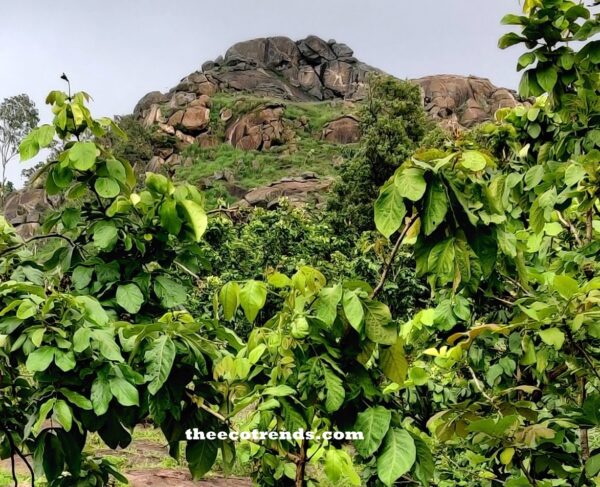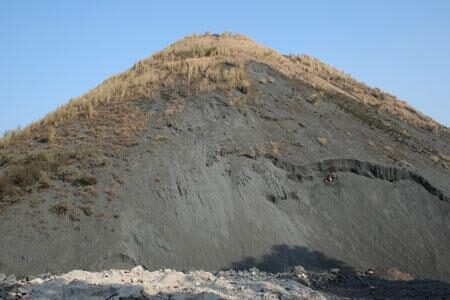Landslides are very common in rainy season. Rains caused serious conditions during previous some weeks this year in many villages of Maharashtra. Many of these villages that were located in the laps of mountains vanished within no time.
In Mahad area of Raigarh in Maharashtra the mountain slides ruined the human habitation in minutes. Devastation was also caused in Boddhavadi in Ratnagiri. Heavy devastation due to mountain slides have also been caused in Karijat, Dabhol, Lonawala etc. areas of the state.
In Chamoli of Uttarakhand many villages have been demolished by the mountain slides. Similar events have also been occurred in Himachal Pradesh, Kashmir and Siliguri. Roads that have been made by cutting mountains are under rubble during rains. Such incidents are to occur in great numbers in remaining rainy season. Compensations are distributed to public against devastations but some authorities are willingly neglecting the real causes of these destructions. It is in news that Maharashtra is trying to rehabilitate villages near mountains.
The real cause behind mountain slides is carelessness towards the lifeless structure standing high in the sky. The most terrifying scene of the rock slide was seen some years back in Uttarakhand on the path of Kedarnath.
Many movements of saving forests and water for the conservation of environment are going on in the country. But, very few discussions have been started on the destruction of natural formations of mountains and plateaus.
Mountains have become the means of earning money for the Governments and society. The mountains and plateaus have remained basis of developments of human civilizations. But no one cares for the dangerous alterations in their shapes and their exploitations.
Thousands of years ago, basic reason behind the settlements of human habitations used to be the availability of water. Civilizations emerged near the banks of rivers. Later, villages were formed near lakes, ponds and springs.
If we observe a village which is not located near the bank of a river, we are sure to find some hill or mountain with the location of ponds and lakes near the hill or the mountain. The society inhabiting the area had learnt to protect each drop of water and to protect or maintain the moisture in the area. Mountains and hills remained green with dense forests and herbs and lovely with birds and wild animals. Whenever it rained, the greenery on the mountain protected the water and the remaining water accumulated in the adjacent pond or lake. The evenings remained cold even during summers and ponds remained full of water even during less rains.
About four decades back ponds ran into bad conditions due to dumping and encroachments. Builders occupied most of the ponds and erected high buildings on these places. The forests on hills and mountains were destroyed and Jhuggies-Jhoparies emerged on them. When rain water falls on naked rocks it erodes them gradually. Now, pucca roads are being constructed on mountains. Mountains are dug out in view of constructing lifeless and useless structures. No one cares that all the ecosystems connected to the mountain are destroyed in these ways.
Take the example of 692 km long Arawali Mountain range that connects Gujrat to Delhi. Courts are repeatedly asking not to disturb mountains but the builder lobby is heavy on all. The area that was called Sadaneera (always full of water) sometimes back is now at the border of a serious water crisis. Satpura, Western Ghats, Himalaya, or any mountain range, mining have damaged all of these.
Mountains are blasted for the construction of railway tracks or High Ways. The engineers concerned with these activities forget about the local environment, society, economy, traditions and beliefs.
If not the society, at least engineers know that when the parts of the earth move towards each other, they rise up and take the form of a mountain. It is now clear that disturbing such a structure can cause serious impacts in the area up to long distances.
At some distance from Malin village of Pune district, there is a dam. This dam was constructed blasting rocks of hills there. This village completely turned into rubble due to sliding of mountain rocks in July of 1920th. It is a subject of enquiry if there is a connection between the rock slide and the activity of breaking of stone on the hills.
Breaking of stone on a hill causes impact on ground water level of the area. Incidents of drying of lakes are common features. If we think seriously, we see that breaking of hills and mountains and damages caused to their ecosystems are not a matter of worry to the local people. Such matters are never discussed in the text books. Now the governments are active to protect glaciers of Himalaya and their ecosystems. But, the governments have never been serious to think over the relations towards growing drought and floods and breaking of stones on mountains.
Mountains are centres of origin of rivers. They are paths of rivers as well. If there is no greenery on mountains, the weathering of rocks starts faster. The sediments get deposited in the ponds and lakes in the foothills.

Greenery on hills invites clouds to rain. Mountains control the temperature in their areas. They provide pastures for cattle. These serve as landmarks for villages. Much can be said about these silent standing mountains but now it is necessary to do something to protect their natural form.




